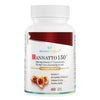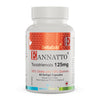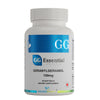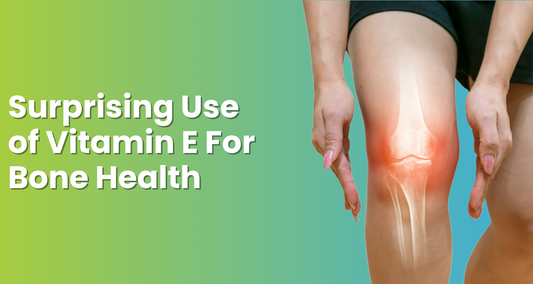High blood pressure has become a common problem in our fast-paced lives, affecting millions worldwide. Yoga for high blood pressure has emerged as a gentle yet effective way to naturally manage and regulate these numbers.
The health benefits of the ancient practice of yoga extend far beyond flexibility and balance, offering a holistic approach to wellness. This blog will provide you with a brief overview of how incorporating yoga into your everyday life can help combat high blood pressure, promoting a healthier, more balanced lifestyle.
Yoga for High Blood Pressure: What Causes Hypertension?
Optimal blood pressure is essential for our survival. It supplies oxygen and nutrients to our tissues and organs. However, when this pressure remains consistently high, it is known as hypertension.
Factors contributing to hypertension include genetics, poor diet, lack of physical activity, and stress. Yoga to lower blood pressure can play a pivotal role in managing these factors, offering a natural remedy to this silent killer.
Different Yoga Mudras to Help Manage Blood Pressure
Mudras, or hand gestures, are an integral part of yoga practice that can influence the body's energy flow and improve health.
1. Chin Mudra Yoga for Blood Pressure

Chin Mudra a fundamental gesture in yoga practice. It is often used in meditation and pranayama (breath control) practices, serving as a powerful tool for calming the mind and enhancing focus.
From the perspective of yoga for high blood pressure, Chin Mudra promotes relaxation and reduces stress, which can indirectly help manage high blood pressure.
The gentle stimulation of this mudra aids in relaxing the cardiometabolic system, encouraging healthy blood circulation and blood pressure levels. Practicing Chin Mudra can be a complementary approach for those looking to achieve a more balanced and healthy cardiovascular state.
How to perform Chin Mudra?
- Sit Comfortably: Find a comfortable seated position on the floor or in a chair. Ensure your spine is straight, and your shoulders are relaxed.
- Position Your Hands: Place your hands on your knees or thighs with your palms facing upward.
- Form the Mudra: Touch the tip of your index finger to the tip of your thumb, creating a circle. The other three fingers should be straight but relaxed, not stiff.
- Breathe and Focus: Maintain this gesture while you breathe deeply. Keep your eyes closed or softly focused in front of you. The Chin Mudra helps to improve concentration and brings about a sense of calmness.
- Hold the Mudra: You can hold this mudra for any duration during meditation or pranayama (breath control practices).
2. Akash Mudra to Regulate Hypertension

Akash Mudra involves touching the tip of the middle finger to the thumb's tip, with the other fingers extended but relaxed. This gesture is believed to balance the element of ether within the body.
Practicing Akash Mudra can offer considerable yoga health benefits. It is said to detoxify the body's physical and emotional realms, which can reduce stress and anxiety levels. Since stress is a significant contributor to high blood pressure, the calming effect of Akash Mudra can help regulate blood pressure levels.
Furthermore, this mudra enhances mental clarity and focus, aiding individuals in maintaining a calm and balanced state of mind, which is beneficial for overall cardiovascular health.
How to Perform Akash Mudra Yoga for High Blood Pressure?
- Sit Comfortably: Adopt a comfortable seated posture, keeping your back straight, and your shoulders relaxed.
- Position Your Hands: Rest your hands on your knees or thighs with your palms facing upwards.
- Form the Mudra: Touch the tip of the middle finger to the tip of the thumb while keeping the other fingers straight but relaxed.
- Breathe and Focus: Engage in deep, slow breaths while holding the mudra. The Akash Mudra is believed to help detoxify the body and improve mental clarity.
- Duration: This mudra can be practiced for 15 minutes, three times a day, or as part of a meditation or pranayama session.
3. Prana Mudra to Manage High Blood Pressure

Prana Mudra is performed by touching the tips of the thumb, ring finger, and little finger together while keeping the other two fingers straight. This mudra is known to activate the body's prana (life force energy), improving vitality and strengthening the immune system. For those concerned with yoga for high blood pressure, incorporating Prana Mudra into one’s practice can lead to meaningful yoga health benefits.
It stimulates the body’s natural healing process, enhancing energy distribution and promoting a sense of balance and well-being. The relaxation and energizing aspects of Prana Mudra can help in lowering stress levels, a common factor affecting blood pressure.
Regular practice can contribute to better blood circulation and stabilization of blood pressure, making it a valuable addition to a holistic approach to managing high blood pressure.
How to perform Prana Mudra Yoga for High Blood Pressure?
- Sit Comfortably: Begin in a comfortable seated position with a straight spine.
- Position Your Hands: Place your hands on your knees or thighs, palms facing upwards.
- Form the Mudra: Touch the tips of the little finger and ring finger to the tip of the thumb, while the index and middle fingers remain straight but relaxed.
- Breathe and Focus: Close your eyes and focus on your breath, taking deep and even breaths. The Prana Mudra is said to activate dormant energy within the body, improving vitality and strength.
- Hold the Mudra: This mudra can be held for 15 to 30 minutes during meditation or while performing pranayama.
Also read: List of Best Yoga Poses and Mudras For High Cholesterol Management
3 Simple Yet Effective Asanas Yoga for High Blood Pressure Management
Yoga offers a variety of poses, or asanas that can help lower high blood pressure by relaxing the body and reducing stress. Here are a few asanas specifically beneficial for yoga for high blood pressure.
1. Baddha Konasana (Bound Angle Pose) Yoga for High Blood Pressure

Baddha Konasana, also known as Bound Angle Pose, offers numerous benefits, including its ability to effectively lower blood pressure. By practicing Baddha Konasana, individuals can experience a reduction in blood pressure due to the gentle stretching and opening of the hip muscles.
This pose helps to release tension in the hips, which may contribute to high blood pressure. Additionally, Baddha Konasana stimulates the pelvic area, which encourages blood flow and helps to regulate blood pressure.
When performed regularly, Baddha Konasana can support blood flow to the lower extremities, including the legs and feet. This increased circulation allows for better oxygen and nutrient delivery to these areas, promoting a healthier cardio-metabolic system.
How to Perform Baddha Konasana?
Performing Baddha Konasana involves steps stretching the inner thighs, groins, and knees, promoting flexibility and stimulating the abdominal organs.
Here's how to do it:
- Start Seated: Begin by sitting on the floor with your legs straight out in front of you. If your hips or groins are tight, use a folded blanket for support under your sit bones.
- Bend Your Knees: Bend your knees and pull your heels toward your pelvis. Drop your knees out to the sides and press the soles of your feet together.
- Bring Feet in: Bring your heels as close to your pelvis as comfortably as possible. With your hands, grasp your big toes or the sides of your feet. Ensure your outer thighs and outer edges of your feet stay firmly on the floor. If your knees are very high off the ground, you can support each knee with a block or folded blanket.
- Sit Up Straight: Maintain a straight spine. Think of lengthening your front torso. Imagine your sitting bones sinking into the floor as you extend the crown of your head towards the ceiling.
- Forward Bend (Optional): For those who have more flexibility, you can deepen the pose by exhaling and leaning forward from the hips, not the waist. Keep the spine long and open. This intensifies the stretch in the inner thighs and groins.
- Hold the Pose: Stay in this pose for one to five minutes. Focus on deep, steady breathing. See if you can gently deepen the stretch with each exhale without forcing your knees down.
- Release: To come out of the pose, straighten your legs before you and gently shake them. Then, hug your knees into your chest for a counter-stretch.
Note it's important to listen to your body and not push beyond your limits. Baddha Konasana can be a deep stretch, so it's essential to approach it with patience and care.
2. Balasana (Child’s Pose) Yoga for High Blood Pressure

Balasana, also known as Child's Pose, is a popular yoga pose that provides numerous benefits for both the mind and body. This pose is particularly effective in promoting calmness while also preparing the hips and spine for movement.
The practice of Balasana is highly regarded for its ability to induce a state of relaxation. It allows the mind to find stillness and focus, helping to alleviate stress and anxiety.
From a physical standpoint, Balasana is an excellent pose to prepare the hips and spine for movement. It prepares the body for more advanced yoga poses by improving flexibility, reducing the risk of injury, and increasing overall stability.
How to Perform Balasana?
Balasana is a restorative pose that stretches the hips, thighs, and ankles while reducing stress and fatigue. Here's how to perform it:
- Start on Your Knees: Begin by kneeling on the floor. Touch your big toes together and sit on your heels, then separate your knees about as wide as your hips.
- Exhale and Lower Your Torso: Exhale and lay your torso down between your thighs. Broaden your sacrum across the back of your pelvis and narrow your hip points toward the navel so that they nestle down onto the inner thighs. Lengthen your tailbone away from the back of the pelvis while you lift the base of your skull away from the back of your neck.
- Extend Your Arms: Stretch your arms forward, palms down on the floor. Active arms: Reach the arms forward and keep them active, stretching the fingers towards the front of the mat to lengthen the sides of your torso further.
- Relax Your Head: Gently place your forehead on the floor. If your forehead doesn’t reach the floor, you can use a yoga block or folded blanket for support.
- Deepen the Pose: To deepen the stretch, try reaching your hands towards the front of the mat while simultaneously sitting back on your heels. This action creates a gentle stretch along your spine and throughout your shoulders.
- Hold the Pose: Stay in the Child's Pose for as long as is comfortable, anywhere from 30 seconds to a few minutes. Use this time to relax, breathe deeply, and let go of any tension in your body.
- To Release: To come out of the pose, use your hands to gently push yourself up to a sitting position on your heels. Pause for a moment and take a few deep breaths before moving on to your next activity.
Balasana is a great pose to incorporate into your practice for relaxation or as a gentle stretch during breaks in more challenging poses. Always move gently in and out of the pose, respecting your body's limits.
3. Savasana (Corpse Pose) to Manage Hypertension

Savasana, also known as the Corpse Pose, is a pose of total relaxation and one of the most challenging. It may seem counterintuitive to think of lying on our backs as challenging. Still, in our fast-paced and constantly busy world, it can be incredibly difficult for many individuals to truly relax and let go.
For those with high blood pressure, Savasana may be particularly beneficial. It teaches them how to slow down, be at peace, and release stress. This pose can help reduce blood pressure and promote a calm state of mind by allowing the body to fully relax.
Anyone can practice Savasana, providing immense relief from stress and tension. So, lie down, relax, and enjoy the tranquility of Savasana.
How to Perform Savasana for Hypertension Management?
Savasana, Corpse Pose, symbolizes the end of yoga practice, allowing the body to integrate the benefits of the session. It promotes relaxation and the release of stress, providing a moment of peaceful rest. Here’s how to perform Savasana:
- Start by Lying Down: Lie flat on your back on the floor. A thin pillow or folded blanket under your head or knees can provide additional support if you find this uncomfortable. Keep your legs straight and slightly apart, letting your feet fall naturally to either side.
- Position Your Arms: Place your arms at your sides with your palms facing upwards, but don’t press your hands down. Keep your arms relaxed and slightly away from the body to allow your chest to open.
- Relax Your Body: Close your eyes and take a few deep breaths. As you exhale, consciously relax each part of your body, starting from your feet and moving upwards to your head. Release tension from every part of the body, including the face and jaw.
- Breathe Naturally: Allow your breath to become natural and effortless. Focus on the sensation of your breath moving in and out of your body. This gentle awareness helps to keep the mind focused and prevents it from wandering.
- Stay in the Pose: If you have the time, remain in Savasana for 5 to 10 minutes or longer. The longer you stay, the deeper the relaxation. Resist the urge to fall asleep; instead, stay present and aware.
- To Exit the Pose: Do not rush to get up. Start by deepening your breath, then gently wiggle your fingers and toes. Slowly roll onto one side, keeping your eyes closed, and rest there for a moment. When you’re ready, use your hands to push yourself up to a sitting position, keeping your head down until last to avoid dizziness.
- Transition Gently: Sit quietly for a few moments before standing up. This allows your body to acclimate and your mind to return to the waking state.
Savasana is a powerful tool for calming the nervous system and reducing stress. It’s important to approach this pose without rushing, allowing the body and mind to fully absorb the benefits of your yoga practice.
What Yoga Should You Avoid with High Blood Pressure?

While yoga offers many benefits, not all poses are suitable for individuals with high blood pressure. It's advisable to avoid any asanas that involve intense stretching or inversion poses where the heart is above the head, as these can increase pressure.
Conclusion
Yoga offers a safe and effective way to manage high blood pressure, enriching one's lifestyle with yoga for high blood pressure and enjoying the wide-ranging yoga health benefits.
Remember, while yoga may significantly contribute to lowering blood pressure and improving overall health, it should complement other lifestyle changes such as a healthy diet and regular exercise.
Always consult with a healthcare professional before starting any new exercise regimen, especially if you have health concerns like high blood pressure. Embrace the holistic journey of yoga and unlock the path to a healthier, more balanced life.
Also read: Yoga for Diabetes: 3 Simple Yoga Mudras & Asanas for Diabetes
Frequently Asked Questions (FAQs) on Yoga for High Blood Pressure

Question: Is yoga good for high blood pressure?
Answer: Yes, yoga may assist in managing high blood pressure. Regular yoga practice may lead to significant health benefits, including stress reduction, improved circulation, and better heart health.
Question: Does yoga lower blood pressure?
Answer: Practicing yoga may help manage high blood pressure. It encourages relaxation and respiratory function and supports a balanced lifestyle.
Question: Can yoga lower blood pressure?
Answer: Absolutely, yoga can lower blood pressure. Through a combination of physical postures, breathing exercises, and meditation, yoga for blood pressure management is an effective, natural approach to maintaining heart health and reducing hypertension.
Question: Which yoga is best for high blood pressure?
Answer: Gentle yoga styles, such as Hatha or Yin Yoga, are best for high blood pressure regulation. Poses like Baddha Konasana (Bound Angle Pose), Balasana (Child's Pose), and Savasana (Corpse Pose) are especially recommended for offering yoga health benefits.
Question: Which exercise is best for high BP?
Answer: For those with high BP, low-impact exercises like walking, swimming, and yoga for high blood pressure may help. These activities help in managing hypertension by improving heart efficiency and blood circulation without putting excessive strain on the heart.
Question: Which Mudra is best for high blood pressure?
Answer: The Chin Mudra and Pranayama Mudra are particularly effective for managing high blood pressure. When combined with deep breathing and meditation, these mudras can harness yoga health benefits to stabilize blood pressure levels.
Question: What is pranayama for high blood pressure?
Answer: Baddha Konasana (Bound Angle Pose) and Balasana (Child's Pose) are excellent pranayama techniques for managing high blood pressure. They may help calm the mind and reduce stress, which is pivotal in yoga for managing high blood pressure.
Further readings:
Vitamin E for Fatty Liver - How Much Vitamin E is Good for Your Liver?
Vitamin E Types – From Tocopherols to Most Potent Tocotrienols











